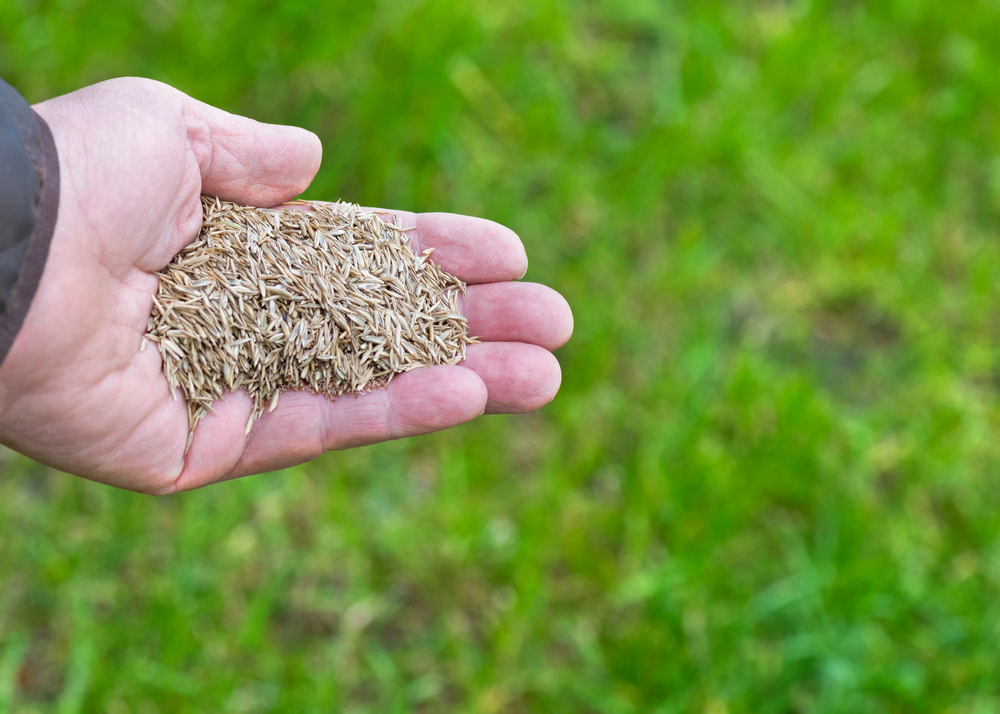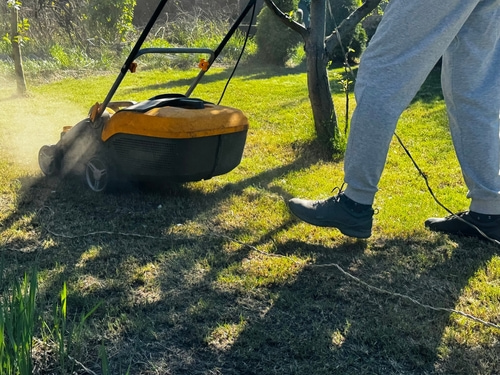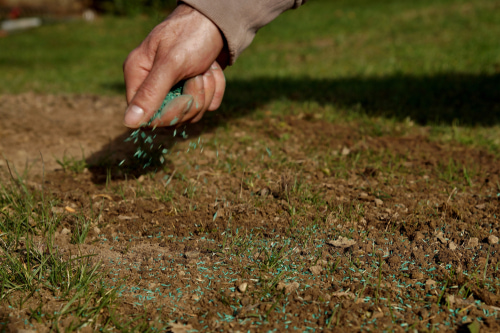
If you were looking for the best methods to make your lawn lush and vibrant, you’ve probably come across the terms aeration and lawn overseeding. These practices are often recommended by professional lawn care technicians in Decatur as an essential part of lawn maintenance, particularly in transitional months of spring and fall.
Yet even though they are commonly mentioned, there is still a great deal of confusion about what these practices entail, what their purposes are, and how they work together to ensure that your lawn stays healthy, resilient, and visually appealing. In today’s guide, we’ll take a more in-depth look at how aeration and overseeding complement each other and their connected role as an integral part of lawn upkeep. Let’s take a closer look!
Is it better to aerate or overseed?
The best answer to this question depends mostly on your lawn’s current state and what your long-term goal is. Aeration is generally better to start with, and this is especially true if your soil is compacted from heavy foot traffic, as water, fertilizers, and nutrients can’t reach the roots efficiently.
If you notice that water tends to accumulate after rainfall and doesn’t penetrate the soil, chances are that you need to grab adequate equipment and aerate your lawn to ensure proper drainage and breathing space for the roots first. However, it’s important to know when the right time for aeration is, as different grass types can have different growth periods.
On the other hand, if your lawn looks thin and patchy, overseeding might be just what your lawn needs to restore its visual appeal. By overseeding, you can introduce new, healthy grass into the turf, which will help thicken the existing lawn.
So, is overseeding worth it on its own? Certainly. But to get the most out of it, combining these practices is highly recommended. This will create an ideal growing environment for new seedlings, where water and nutrients can seamlessly reach the roots.
Should I overseed before or after aerating?
If you are combining the two, the best way to do it is to overseed after aeration. Doing it before can result in loss and displacement of seed, uneven planting, and drastically lower the chances for the grass to take root. By aerating first, you’re essentially preparing the seedbed.
The holes left behind by the aerator work as pockets where seeds can settle, protected from wind, run-off, or being eaten by birds. On top of that, aeration softens the soil and allows a hospitable environment for the seed to germinate and develop into the grass.
What to do before overseeding a lawn?

Preparing the lawn before you get to overseeding isn’t just a good practice; it’s essential. Taking some time to get the seedbed ready for growth can make all the difference between a thick, lush lawn and seeds that have a hard time sprouting, resulting in patchy, uneven grass. It’s also important to pick the best time to aerate and overseed your lawn, which is typically in early fall and late spring.
Here are some of the essential steps to tackle before overseeding, but for the best outcome, we recommend consulting with professionals for a full before-and-after lawn care:
- Pick the right seed: If your existing grass hasn’t been doing well, this is a good opportunity to introduce seeds that are better suited to the local climate or more disease-resistant. Consult with local lawn care professionals in Decatur to pick the right grass type for the local climate.
- Test the acidic levels: Healthy soil is essential for undisturbed sprouting and grass growth. By testing the pH levels of the soil and addressing nutrient deficiencies, you can ensure a healthy seedbed where your grass can thrive.
- Mow the existing grass: Mow your lawn shorter than usual, ideally at two inches in height. This will give your seedlings a better start by providing more sunlight and more space to grow, with no competition from older grass.
- Clear away organic debris: Be sure to rake up the clippings from mowing and thatch. This will clear the way for the seed to reach the soil, so that it can settle in and germinate, without the risk of drying out in dead grass.
- Aerate the soil: This is especially important if you have compacted soil. By pulling out plugs of soil, you are creating small holes that ensure an efficient delivery of water, nutrients, and fertilizer to the root zone.
- Water the lawn: Lightly water your lawn the day before seeding, but make sure not to dampen it too much to the point where it becomes muddy and soggy. Moist soil will facilitate a healthy environment for seeds to settle in and germinate.
Can I overseed without aerating?
It’s possible to skip aerating if you are dealing with compacted or clay-heavy soil, but this practice isn’t recommended. If you are unsure how to overseed a lawn without aerating, you can rely on professionals in Decatur to check your soil. Alternatively, you can test the soil on your own, but it’s important to remember that lawn care technicians have experience to accurately assess whether aeration is necessary.
You can check whether your soil is too compacted by pushing a screwdriver or a shovel into the soil. If it doesn’t penetrate seamlessly, it’s highly encouraged to aerate first. Otherwise, you may risk low germination and a patchy lawn in the future.
If the soil is adequate, you can start overseeding by mowing the lawn to about 2 inches of height to ensure sunlight reaches the seed, followed by raking dead grass, leaves, and other debris to expose the surface underneath. Once that is done, you can use a spreader to distribute the grass seeds equally on the soil, according to the instructions written on the bag. It’s important to keep the soil moist by watering it until the grass takes root and establishes itself.
How often can you overseed your lawn?
When it comes to maintaining a lush and vibrant lawn, understanding when and how often to overseed can go a long way. Typically, the ideal frequency of a lawn overseeding process can depend on several factors:
- Poor lawn condition: If you notice bare patches, thinning grass, and unwanted weeds, it’s time to overseed your lawn.
- Heavy-use lawns: If your lawn sees a lot of foot traffic, drought, or disease, an annual overseeding can restore density and make it lush again.
- Maintained lawn: If your grass looks healthy and vibrant, overseeding every few years will suffice. With professional lawn care, you can keep your lawn lush with minimal overseeding.
Who to contact for dependable lawn overseeding in Decatur, IL?

At Classy Grass, we have everything you need for a lush and healthy lawn. Our professionals are equipped with modern tools, comprehensive greenkeeping experience, and a meticulous and passionate approach to ensure your grass grows in a safe and comfortable environment, unrestricted by compacted soil. From seasonal maintenance to aeration and other lawn care services, you can expect premium solutions tailored specifically to what your backyard needs.
Whether you live next to Staley Field or anywhere else in Decatur and the area, our team is just one quick call away from elevating your lawn with the latest techniques and time-proven methods. Give us a call today, and enjoy a vibrant lawn maintained by true experts.